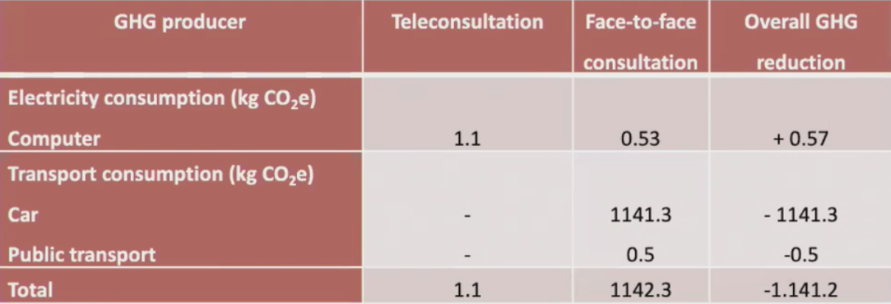The greenhouse effect includes the trapping of the sun’s warmth in the Earth’s atmosphere secondary to greater transparency of the atmosphere to visible radiation from the sun than to infrared radiation emitted from the Earth’s surface. In 2016, the carbon footprint in the USA was estimated at 10%, whereas in 2020 the carbon footprint in the UK was estimated at 20%.
Dr. Pinar notes that the concept of telemedicine was introduced in 1960 in the field of psychiatry and was recently pushed to the forefront in the majority of urology departments in early 2020 secondary to the COVID-19 pandemic. The objectives of the current study were to (i) assess the greenhouse gas reduction with teleconsultation during the COVID-19 pandemic, (ii) perform a cost analysis, and (iii) perform a patient satisfaction analysis. The inclusion criteria included a teleconsultation during 14 consecutive days in May 2020 and age >18 years. The only exclusion criteria were living in a foreign country. The travel distance estimation was as follows:
- 1km by car = 0.175 kg CO2e
- 1km by metro = 0.0034 kg CO2e
- 1km walking = 0 kg CO2e
Additionally, 20 minutes of internet connection for two people during a teleconference consultation was estimated at 67 Wh = 0.0067 kg CO2e.
There were 80 teleconsultations led by five urologists with the majority of consultations secondary to an oncology chief complaint. The following table displays the descriptive statistics of the cohort:
As follows are the results for the reduction in greenhouse gases comparing teleconsultations to in-person visits:
The secondary outcomes included 974€ saved and 1.4 hours of patient time saved, as well as 86% of patients being satisfied with the teleconsultation process.
Dr. Pinar concluded his presentation with the following take-home messages:
- Teleconsultation resulted in 6,000 kilometers of avoided transportation
- There were 1.1 tons of CO2e saved, which is equal to a 99% greenhouse gas reduction
- Teleconsultation was associated with a small cost saving
- There was a high satisfaction rate among patients
Written by: Zachary Klaassen, MD, MSc, Urologic Oncologist, Assistant Professor of Urology, Georgia Cancer Center, Augusta University/Medical College of Georgia, Augusta, Georgia, Twitter: @zklaassen_md during the 18th Meeting of the EAU Section of Oncological Urology (ESOU21), January 29-31, 2021


